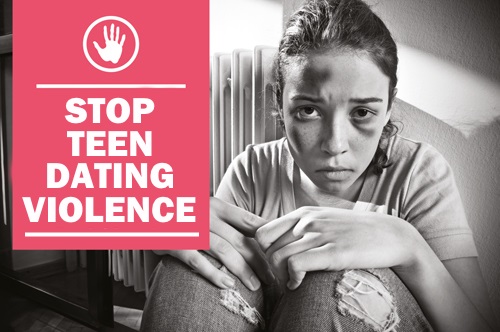Dating Violence
Dating violence is a pattern of behaviour where one partner uses threats of – or actually uses – physical, sexual, verbal, or emotional abuse, to control his or her dating partner. Although teen dating violence is not a new problem, it has only recently been recognised and identified. It is a silent and hidden crime that crosses all economic, racial, age, religious, and class barriers.
The Issue is Power and Control
Many people believe that dating violence begins with the first hit. However, the abuse begins much earlier. Dating violence involves a range of coercive and abusive behaviours, including threats, intimidation, isolation, and manipulation. The purpose of the abuse is to establish and maintain control over the other partner and the relationship. By the time physical abuse is present, a pattern of verbal, emotional, and sexual abuse has already been established.
Emotional Abuse
May be difficult to identify because it is often disguised as acts of kindness and concern. Because it is so subtle, and it comes from someone the victim trusts, it is extremely manipulative and causes the victim to feel responsible for any problems in the relationship. Common examples include telling the victim how to think, feel, dress, or act to “help” them “better themselves” or forcing them to limit contact with family and friends to show how much they care about the abusive partner. Emotional abuse also involves ignoring the victim, withholding affection, convincing the victim they said things they didn’t say, monitoring their movements or communications, or breaking promises.
Verbal Abuse
Is characterised by put-downs, name-calling, accusations, humiliation, bossing the victim around, or threats. The purpose of verbal abuse is to belittle the victim and make them feel powerless. This allows the abuser to convince them that they are stupid and worthless, and that they could not survive without the abusive partner. They will use any mistake the victim makes (for example, getting a bad grade or being five minutes late for a date) to justify this point and humiliate them.
Sexual Abuse
Can occur in many forms in a relationship. Like other forms of abuse, sexual abuse occurs in a continuum of verbal, emotional, and physical assaults. Examples include: pressuring or coercing a person to have a sexual relationship; accusing them of being a prude, frigid, or unfaithful; bragging about the sexual relationship to peers in order to embarrass the person; threatening a harmed or ruined image if the person does not engage in a sexual relationship; not allowing the use of condoms to prevent pregnancy or sexually transmitted diseases; physically forcing the person to perform sexual acts; or rape.
Physical Abuse
Is any type of physical control over another person. Examples include: restraining someone from leaving; abandoning someone in a dangerous place; hitting – both directly and in the vicinity of the person (such as hitting the locker or wall next to the person’s head); pulling hair; throwing objects at or near the person; driving too fast or recklessly; or shoving, slapping, biting, punching, burning, or stabbing. Physical abuse can and does become lethal in some abusive relationships. The myth that “they only hit me once, it will never happen again” is untrue and dangerous. The abuse will continue to increase in frequency and severity without intervention.
In the case of teens, students, parents, and school officials may easily identify physical abuse as violence, but fail to identify the perpetrator’s behaviour as controlling another person through emotional, verbal, or sexual coercion, which is abusive. The victim, too, may have difficulty recognising abuse until after the first assault.
In the case of adults, friends and relatives often can tell what is going on but the victim is caught up in the love he or she feels for the perpetrator and finds it difficult to walk away from the relationship. As time goes on, the perpetrator chips away at the victim’s confidence until she is mentally unable to leave.
If you are concerned that a teen you know may be experiencing dating violence, you can contact your local domestic violence/sexual assault program for information and supportive services.
For Teens and Young Adult Women:
Dating violence, like domestic violence, is a pattern of controlling, and abusive behaviours of one person over another within a romantic relationship. Included is verbal, emotional, physical, sexual, and financial abuse. It can occur in both heterosexual and homosexual relationships. Plus, it knows no boundaries and crosses all lines of race, socio-economic status, etc. It CAN happen to ANYONE.
If you are a teen or young adult who has experienced dating or sexual abuse, and you want to seek advice or counseling about it, Lifeline offers a telephone counseling service on 1800 737 732 where you can talk to someone who can advise you what can be done about the situation. You may need help from the police and other such officers. Please do not hesitate to call if you feel you need help.
If you or someone you know is experiencing domestic violence, you can ring the Domestic Violence Line for help on 1800 656 463.

